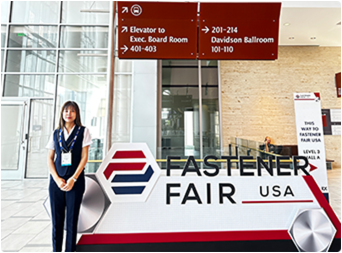Nov . 24, 2024 05:00 Back to list
Essential Rope Rigging Equipment for Safe and Efficient Outdoor Activities
Understanding Rope Rigging Hardware Essential Tools for Safe and Effective Operations
Rope rigging hardware is an essential element in various industries, from construction to maritime applications. Whether you are lifting heavy loads or securing equipment, having the right rigging hardware is crucial for ensuring safety and efficiency. This article explores the different types of rope rigging hardware, their uses, and best practices for maintaining equipment.
Types of Rope Rigging Hardware
1. Carabiners These are metal loops with a spring-loaded gate that is commonly used in climbing, sailing, and rescue operations. Carabiners come in various shapes and sizes, each designed for specific loads and applications. The two main types are locking and non-locking carabiners. Locking carabiners add an extra layer of safety by preventing accidental unhooking.
2. Snaps and Hooks Snaps and hooks are versatile components that provide quick attachment points for ropes. They are available in different styles, including snap hooks, clasp hooks, and swivel hooks. Each type has its specific use, such as connecting a rope to a harness or securing cargo in place.
3. Pulleys Pulleys reduce the amount of force needed to lift an object. They can change the direction of a force and are commonly used in rigging systems to create mechanical advantages. Depending on the application, pulleys can come in single or multi-sheave configurations, allowing for various lifting capacities.
4. Webbing and Slings Made from durable materials like nylon or polyester, webbing and slings are essential for lifting and securing loads. They come in different widths, lengths, and strengths, allowing for customization based on the specific job or load requirements. The use of slings is particularly important in scenarios that require protection for delicate or irregularly shaped loads.
5. Winches and Hoists Winches and hoists are mechanical devices designed to lift and lower loads safely. Winches are often used in situations where a line needs to be pulled in or let out, while hoists are typically employed for lifting heavy payloads vertically. Both devices come with varying power sources, including manual, electric, and hydraulic options.
Choosing the Right Hardware
Selecting the appropriate rigging hardware is essential for maintaining safety and efficiency. Here are some key considerations to keep in mind
- Load Capacity Always check the load capacity rating of the hardware you are using
. Exceeding this limit can lead to equipment failure and serious accidents.rope rigging hardware

- Material and Durability Different applications require different materials. Stainless steel is often preferred for marine applications due to its corrosion resistance, while aluminum may be suitable for lighter tasks.
- Environment Consider the environment in which the hardware will be used. For outdoor applications exposed to harsh weather conditions, corrosion-resistant materials and protective coatings are essential.
- Compatibility Ensure that all components in your rigging system are compatible with one another. This includes checking that the diameter of the rope matches the hardware used, as well as ensuring that fittings are appropriate for the load and application.
Maintenance and Safety
Regular maintenance of rope rigging hardware is crucial for ensuring longevity and reliability. Here are some best practices
- Inspection Before each use, inspect all hardware for signs of wear and tear. Look for cracks, deformation, or corrosion that may compromise integrity.
- Cleaning Clean your rigging hardware after use, especially if exposed to saltwater or other corrosive substances. Use proper cleaning agents and techniques to avoid damaging the material.
- Storage Store rigging hardware in a dry, clean environment to prevent rust and damage. Avoid leaving equipment in direct sunlight or extreme temperatures for prolonged periods.
- Training Ensure that all personnel involved in rigging operations are properly trained. Understanding how to use and maintain rigging hardware safely can prevent accidents and injuries.
Conclusion
Rope rigging hardware plays a pivotal role in various operations, facilitating safe lifting and securing of loads. By understanding the different types of hardware available, making informed choices, and adhering to maintenance best practices, you can enhance safety and efficiency in rigging operations. Investing in quality equipment and training will ultimately lead to successful and secure outcomes across all applications.


